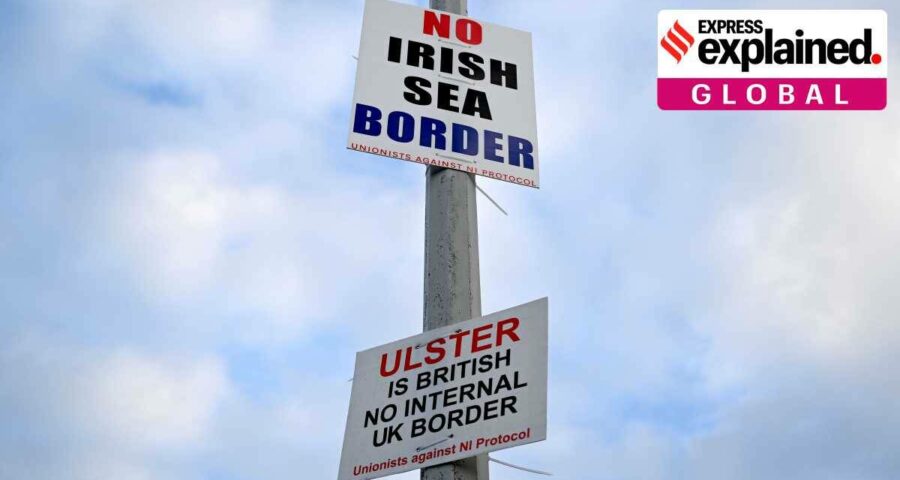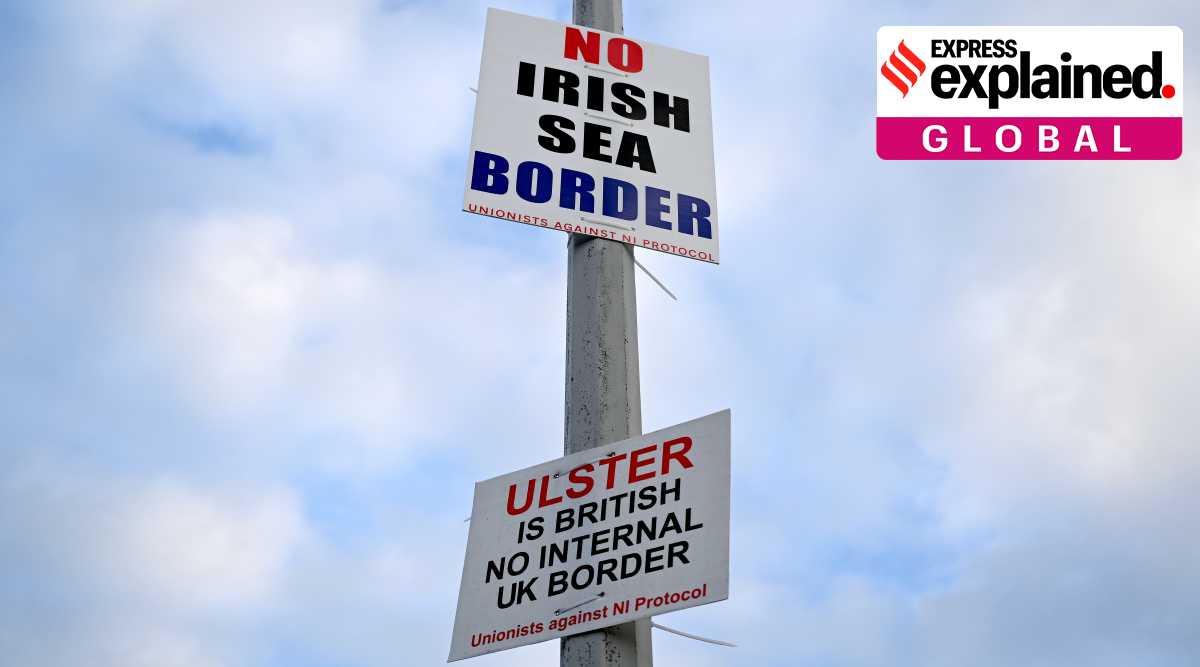The UK is expected to trigger the article just after COP26, which is taking place in Glasgow right now. Some reports also suggest that the UK might act before COP26.
There is concern that the UK might trigger Article 16 of the Northern Ireland Protocol, popularly known as the Irish Backstops, several media reports have said. The Irish Backstops determine the nature of post-Brexit trade and in case the UK does invoke it, it would further strain relations with the EU as well as with Ireland.
The UK is expected to trigger the article just after COP26, which is taking place in Glasgow right now. Some reports also suggest that the UK might act before COP26.
Back in July, the UK government said the threshold for triggering the article had been reached. The BBC notes that while the protocol prevents a hard border between Northern Ireland and the Republic of Ireland, it has created a new trade border between Northern Ireland and the rest of the UK, which the EU has accepted is causing problems for many businesses.
While the EU has proposed measures to ease checks and controls, the UK wants that the protocol be reformed.
Firstly, what are the Irish Backstops?
The Irish Backstop, formally known as the Northern Ireland Protocol, is an agreement that was reached between the UK and the EU that there would be no new checks on goods crossing the border between Northern Ireland and the Republic of Ireland.
Before Brexit, people and goods could move freely between the two areas because both were part of the EU’s single market and customs union, but the border situation changed post-Brexit. The UK comprises Wales, Scotland, England and Northern Ireland. Out of these, Northern Ireland is the only country, which still remains within the EU’s single market system for goods.
Having the backstops means that there would be no border between Northern Ireland and the Republic of Ireland. It also means that goods cross to and from the country into the EU without customs checks, tariffs and extra paperwork.
The backstops were opposed by the Democratic Unionist Party (DUP) of Northern Ireland since they saw them as weakening Northern Ireland’s position within the UK.
What is Article 16?
Article 16 of the protocol, titled “Safeguards”, says that if the application of this agreement leads to “serious economic, societal or environmental difficulties that are liable to persist, or to diversion of trade,” then the UK can unilaterally take appropriate safeguard measures. But the UK will have to prove that it is facing these difficulties if it wants to trigger it.
Essentially, invoking this article would pause the protocol and will create a space for further negotiations about how trade should be conducted.
The Irish Times reported that there are fears that triggering Article 16 could lead the EU to take retaliatory action, ultimately leading to the suspension of the free trade agreement between the EU and UK.
What was the situation at the Irish border before Brexit?
Before Brexit, the border between the Republic of Ireland and the UK was the only significant land border between the UK and the rest of the EU, and the negotiations for the withdrawal of the UK from the EU recognised the Irish border issue as one of the three most important issues any withdrawal agreement would need to satisfactorily resolve.
The governments of both Ireland and the UK stated their desire to avoid a “hard” border, that is, a border marked by checkpoints and supervised crossing posts.
Since around 2005, the presence of physical infrastructure on the Irish border has been practically non-existent, with only a single sign on an uninterrupted road bearing a welcome message and a change from miles per hour to kilometres per hour, or vice-versa.
Newsletter | Click to get the day’s best explainers in your inbox
The existence of such a border was made possible by the processes that began with the Good Friday Agreement, which was signed on Friday the 10th of April, 1998. This agreement ended The Troubles — a decades-long conflict in Northern Ireland between the Unionists, who wanted Northern Ireland to remain within the UK, and the Republicans, who wanted Northern Ireland to leave the UK and unify with the Republic of Ireland.
When the question of Brexit arose, there also emerged the Northern Ireland Protocol, also known as the Irish Backstop.
Source: Read Full Article



